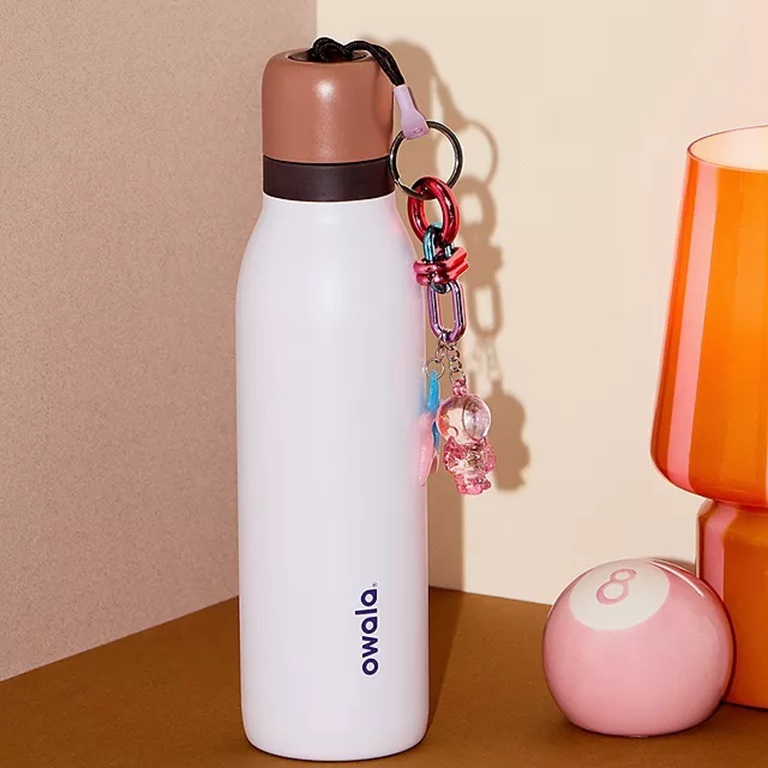Contents
Reusable bottles for water have become a staple in everyday life. They’re used for school, work, the gym, or travel. They’re convenient, eco-friendly, and cost-effective, making them a smart choice for anyone looking to reduce single-use plastic and stay hydrated on the go. But with so many options available, it can be tricky to decide which one is right for you.
Why Make the Switch?
Switching to these kinds of bottles has many benefits. It’s not just about reducing waste. A single reusable bottle can replace hundreds of disposable plastic ones. This cuts down on landfill and ocean pollution a lot. They’re also good about your financial situation. Drinking tap water or filtered water is much cheaper than buying bottled water all the time.
Also, reusable, eco friendly water bottles are encouraging people to stay hydrated. Having the bottle right beside you is a reminder to keep drinking. You’ll sip it throughout the whole day. Plus, if you’re a family with small children, it’s nice to teach them at a young age that sustainability and responsibility are very important.
Things to Consider when Buying

Materials
These types of bottles can be made of several materials, and they all have their pros and cons. Stainless steel, for example, is well known for its durability and incredible insulation. There are double-wall bottles that will keep the drink hot or cold for up to 48 hours. Stainless steel is stain and odor resistant, but it’s a bit heavier than plastic.
Glass is another good material. It’s pure, clean and doesn’t have any metallic or plastic aftertaste. However, glass is a fragile material and can be broken. That’s why it’s not suitable for children. If you decide to buy one, use a protective silicone sleeve to keep it safe from bumps and cracks.
BPA-free plastic is also an option. People, especially kids, love it because it’s lightweight, affordable and comes in many fun designs. However, these bottles are not as durable as stainless-steel ones. You can also buy a collapsible silicone one that’s great for hiking or short travels. Essentially, choosing a material comes down to your lifestyle. If you’re an office worker, glass will be great; if you’re an outdoor person, stainless steel is the right option.
Size and Capacity
The size of your bottle can make a big difference in how convenient it feels. The sizes can vary from 350 ml up to 1.5 litres. There are smaller bottles suitable for backpacks, but they need to be refilled all the time. There are also larger ones, but they’re not that practical because of their weight.
A bottle that’s between 500-700 ml is perfect if you’re looking for something you can use every day. Consider your daily routine to match your hydration needs. Are you at the office? Are you commuting? Are you exercising? Answering these questions can help you make the right choice.
Design and Features
Many modern water bottles come equipped with different features to make them more practical and more comfortable. Insulated walls are there to maintain a certain temperature for hours. Wide mouths are good for adding ice cubes when you want to cool down. They’re also making cleaning and maintenance easier.
If you need a bottle you can handle with one hand, you can buy one with a straw lid or flip top. To prevent spills in your bag, look for a bottle with a leak-proof seal. Of course, handles make everything better. You can easily carry the bottle if you’re always on the go.If you’re buying for your children, look for bottles with spill-resistant designs. Also, lightweight materials and easy-to-open caps will make the whole drinking experience much better and simpler.
Cleaning and Maintenance
One of the biggest considerations when choosing drink bottles is how easy they are to clean and maintain. Naturally, bottles that have narrow necks are harder to scrub. Bottles with removable lids and wide mouths, on the other hand, are much simpler to keep clean because brushes and sponges can go in.
There are bottles that are allowed to go into a dishwasher. Always read the cleaning instructions because some of them are not dishwasher-safe and need to be washed by hand. Clean your bottles daily. Damp and enclosed spaces are the perfect breeding ground for bacteria. If you can, invest in a bottle that comes with a brush to make cleaning simpler and less time-consuming.
Benefits of Having Reusable Bottles

Reducing Plastic Waste
This is one of the biggest advantages of reusable water bottles. They have a positive impact on the environment because even one reusable bottle can replace hundreds of plastic ones. Plastic bottles need hundreds of years to break down, and a reusable one can be recycled. This leads to a safer and cleaner planet.
Saving Money
Even though bottled water seems inexpensive, buying it all the time adds up. A reusable bottle is a one-time purchase that lasts for years. You can refill it with tap or filtered water and save a lot of money in the long run. This is a great way to save money, especially if your family drinks a lot of water.
Staying Hydrated
When you have your bottle by your side, you’ll start to develop healthy hydration habits. You’ll drink more when you have the bottle by your side. It doesn’t matter if you’re working, commuting, exercising or just watching TV, you’ll keep sipping.
Durability and Variety
We all know how flimsy and easily crushed regular plastic bottles are. Unlike them, reusable ones are sturdy, durable, and designed to last. They’re damage-resistant, give you a clean and fresh taste, are lightweight, can be used by kids, and are perfect for travelling. Plus, with so many colours, patterns and designs available, you’re sure to find something you’ll like and carry with pride.

